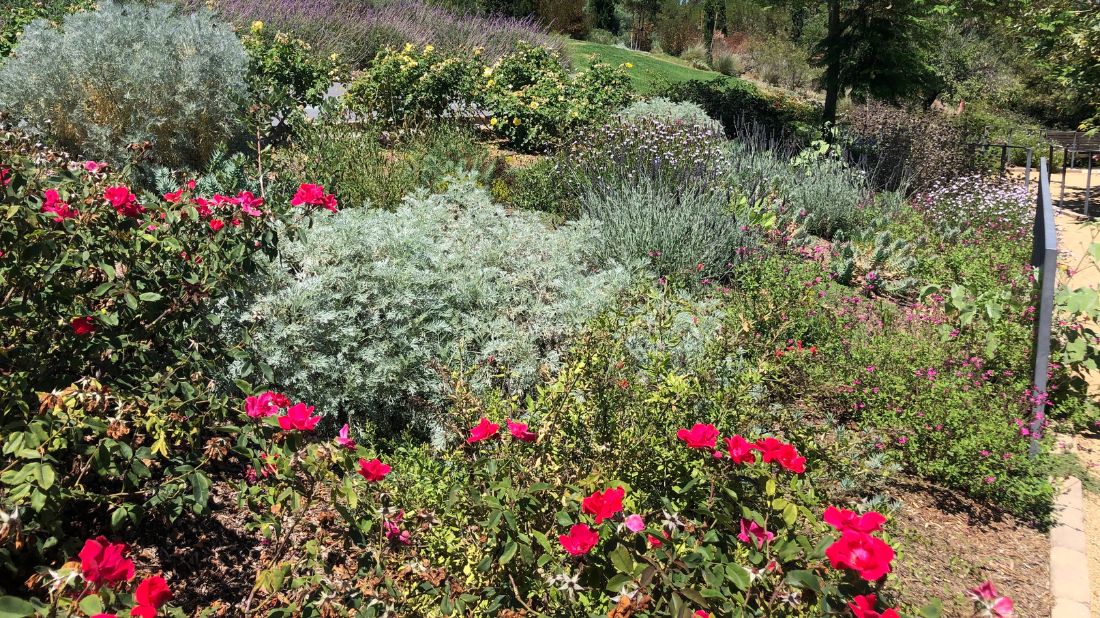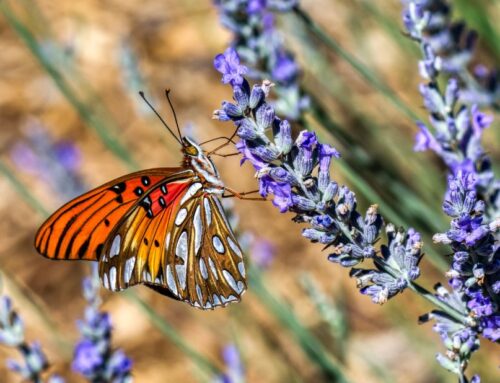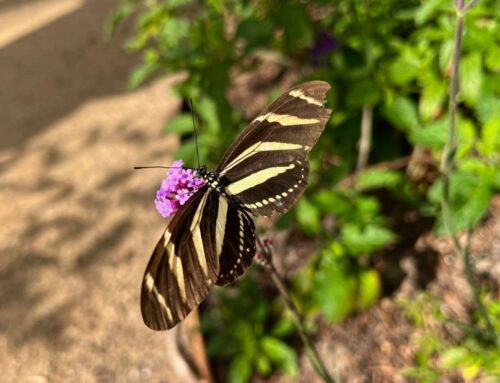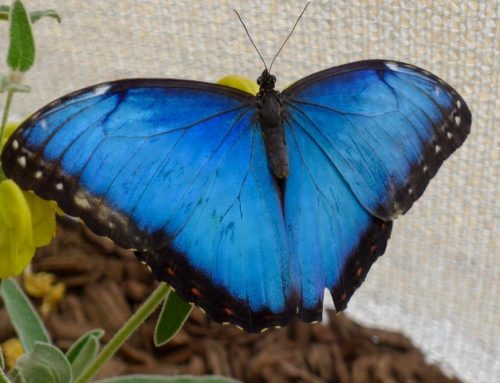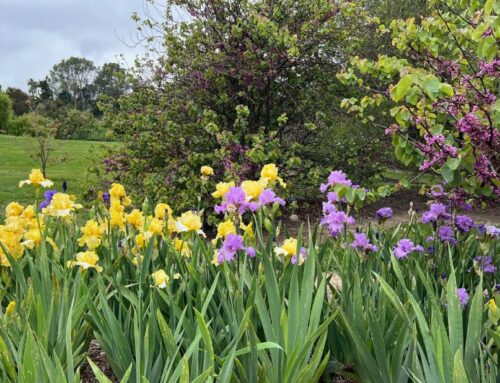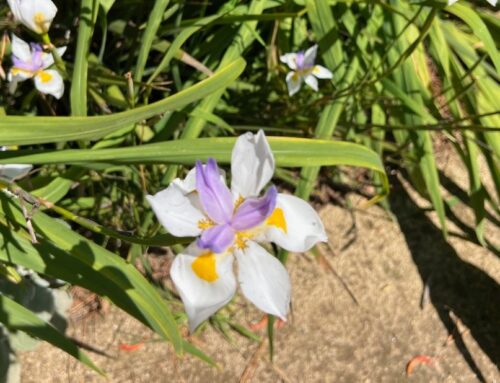By Terry Huang
Director of Living Collections at South Coast Botanic Garden
Some (Don’t) Like it Hot
With the hottest July on Earth officially in the record books, everyone is feeling the heat! As the global atmospheric temperature rises, the climate will continue to get weird. This extra warmth is the “fertilizer” that allows weather patterns to grow and have more intense effects like scorching heat in the Southwest to disastrous flooding in the Northeast. We also have an extra flourish this year thanks to a natural phenomenon called the El Niño-Southern Oscillation (ENSO). This shift of temperature in the equatorial waters of the Pacific Ocean causes “El Niño” or “La Niña,” and affects weather patterns across the world. This year we are on track for an El Niño and so far it has helped turn the dial up on global temperatures. If it is here to stay, it will also increase the chance of a wetter and stormier winter in California.
It is not just us feeling the heat, but the plants as well. One example is the ongoing scorching heat in Arizona that has been stressing saguaro cacti to the point of collapse. Here at South Coast Botanic Garden, we are experiencing the shift in climate differently. The cold and relentless rain of the past winter set some of our tropical species back and pushed some over the edge, like the coral tree (Erythrina caffra) in the Pollination Garden that fell due to rot. Another impact was the sudden switch from cold to hot conditions in early summer. Without time to acclimate, this caused our delicate plants to singe and stunt, and some of them – like our seasonal plantings – still haven’t recovered.
We hear Mother Nature loud and clear and we are planning and implementing ways to respond to the changing climate. Mindful gardening is something we always strive for as we care for the collections and Garden grounds. What I mean by this is thinking about how the plantings will not only impact the aesthetics and educational value of the Garden but also how it impacts the local environment and our use of resources.
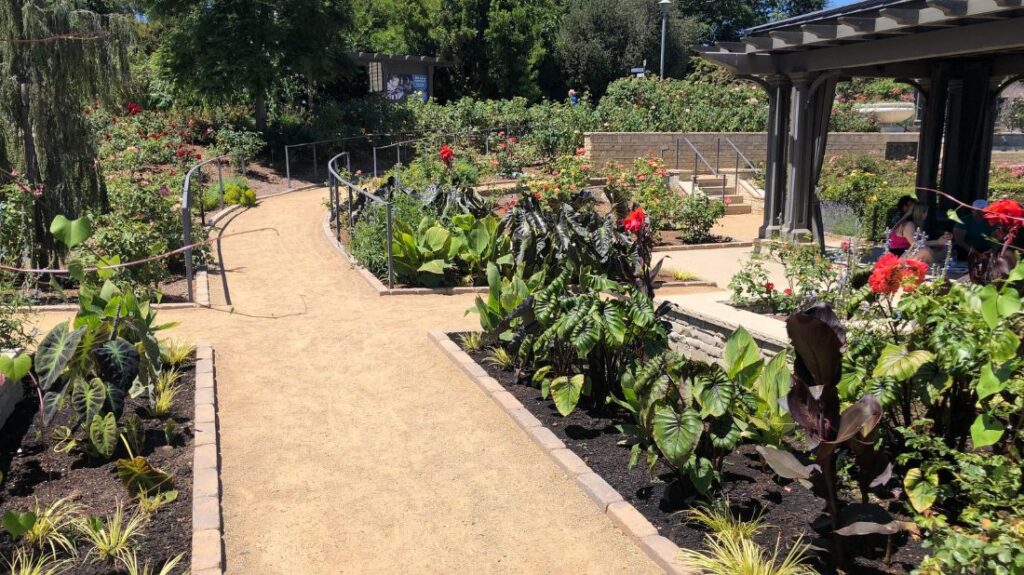
Instead of constantly fighting the saturated soil conditions of this location in the Rose Garden, the Horticulture Department as selected plants that would thrive in the sunny boggy conditions.
Right Plant, Right Place
Plants are the healthiest and most beautiful when they are in their element. By planting them in the conditions they are adapted to, they can resist many pests/diseases and require less time and resources to maintain. For example, we have a section of the Rose Garden where existing roses were perpetually looking sad. It turns out the soil is too wet and heavy for their liking and their roots were rotting. We salvaged the roses and took advantage of the situation by replanting the area with plants that thrive in wet soils – like cannas (Canna x generalis), taros (Colocasia esculenta cv.), bog sage (Salvia uliginosa) and sweet flag (Acorus gramineus ‘Ogon’).
What can you do at home? Before planting, assess the growing conditions of the planting space. Daily light levels, soil type, moisture retention and space are the four main things to consider. Once you have a good feel of the conditions, let those parameters guide the plant palette. There is a plant for almost every situation.
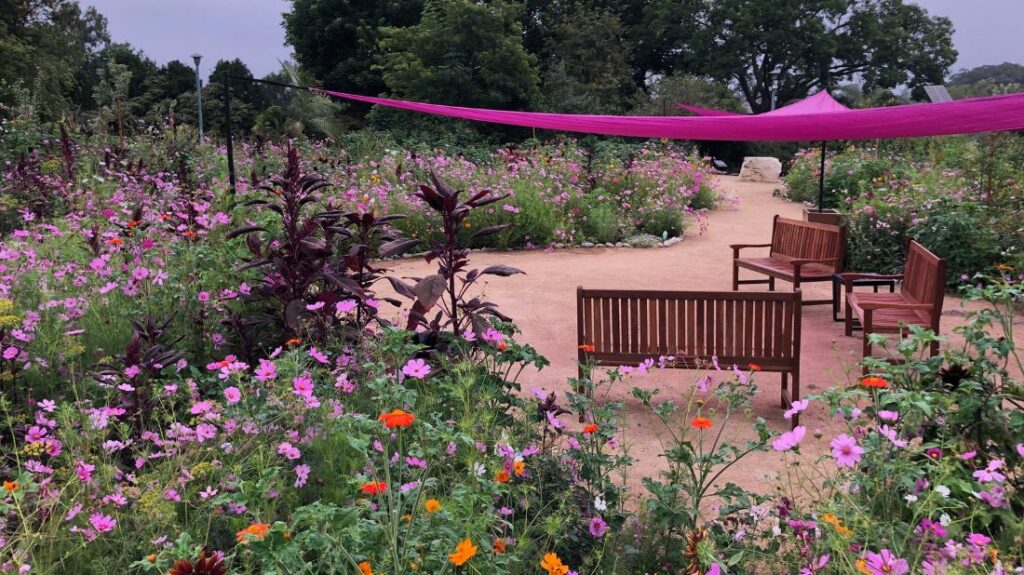
A major component of the seed mix for the Pollination Garden were species that could handle heat and intermittent dry periods since they would be growing during our dry season. Come autumn, the permanent palette of predominately native species will be planted in their place. This will not only reduce water usage, but also provide much needed food and habitat for our local fauna.
Climate Adapted
While we edit and refresh plantings in the Garden, we try to select species that would do well in the climate of Southern California. Drought tolerance is just one of the many considerations, we also consider other factors like heat and cold tolerance and seasonality of water needs. Another factor that is also important but not often thought about is winter chill. Many traditional ornamental trees originate from a temperate climate with frigid winters. To survive in these environments, these species “count” the number of cold days (also known as chill hours) to ensure that they wake up well after the last frost.
For example, the Rose Garden was mistakenly planted with Yoshino cherries (Prunus x yedoensis ‘Akebono’) that slowly declined over the years. Due to our proximity to the coast, our climate was too mild. They were replaced with a variety called ‘Pink Cloud,’ which is one of the two main kinds – other being Taiwan cherry (Prunus campanulata) – that do best in the Garden because of their lower cold requirements.
What can you do at home? Many native species and ones from Mediterranean and desert-climates do well in Southern California. You might have noticed that I said “most.” That is because species from these large climatic areas occupy many habitats and some may do better inland, along the coast, or in higher elevations. A good way to check its compatibility is to learn a little bit of what the conditions of its native habitat is like. Gardening is like dating, you may have to try a few different kinds of plants to find the ones that are a good fit for your specific conditions.
Efficient Use of Resources
Another important element to be mindful of when gardening is paying attention to the time, effort and resources it takes to maintain it. With 87 acres and a small team, it wouldn’t be ideal to have a garden in the style of Versailles – no matter how spectacular that may be. Between the hours of shearing, high water use and intensive pest management, it would be an irresponsible use of our resources. By planning and siting gardens carefully, the collections can be sustainable both ecologically and in time and labor.
The Garden implements many practices, but the three main ones are:
1. Practicing a technique called “hydro-zoning,” where plants with similar water needs are planted together
2. Reducing the sprawl of high-water and high-maintenance gardens by putting them close to each other
3. Watering deeply during the early or late hours of the day as much as possible (with severe weather, this one is harder to do)
What can you do at home? Selecting climate-adapted species and planting them in their ideal situations goes a long way. Site plants with compatible and similar cultural needs together as a harmonious plant community needs less attention and futzing. Finally, watering thoroughly during the cooler times of day will help water soak deeper into the soil and last longer. (Applying mulch will further slow the rate of evaporation.)
Collections Policy
Botanic gardens are like museums, but instead of collecting and protecting Monet paintings or Warhol prints, we have beautiful living sculptures created by the ultimate artist, Mother Nature. Being a museum with collections that are living comes with a different set of joys and challenges, but the changing climate adds a whole different layer of complications. We are taking this seriously by developing a collections policy that will help guide the curation and maintenance of the collections on our grounds. This is to ensure that the Garden thrives and can be enjoyed by the public for years to come.


